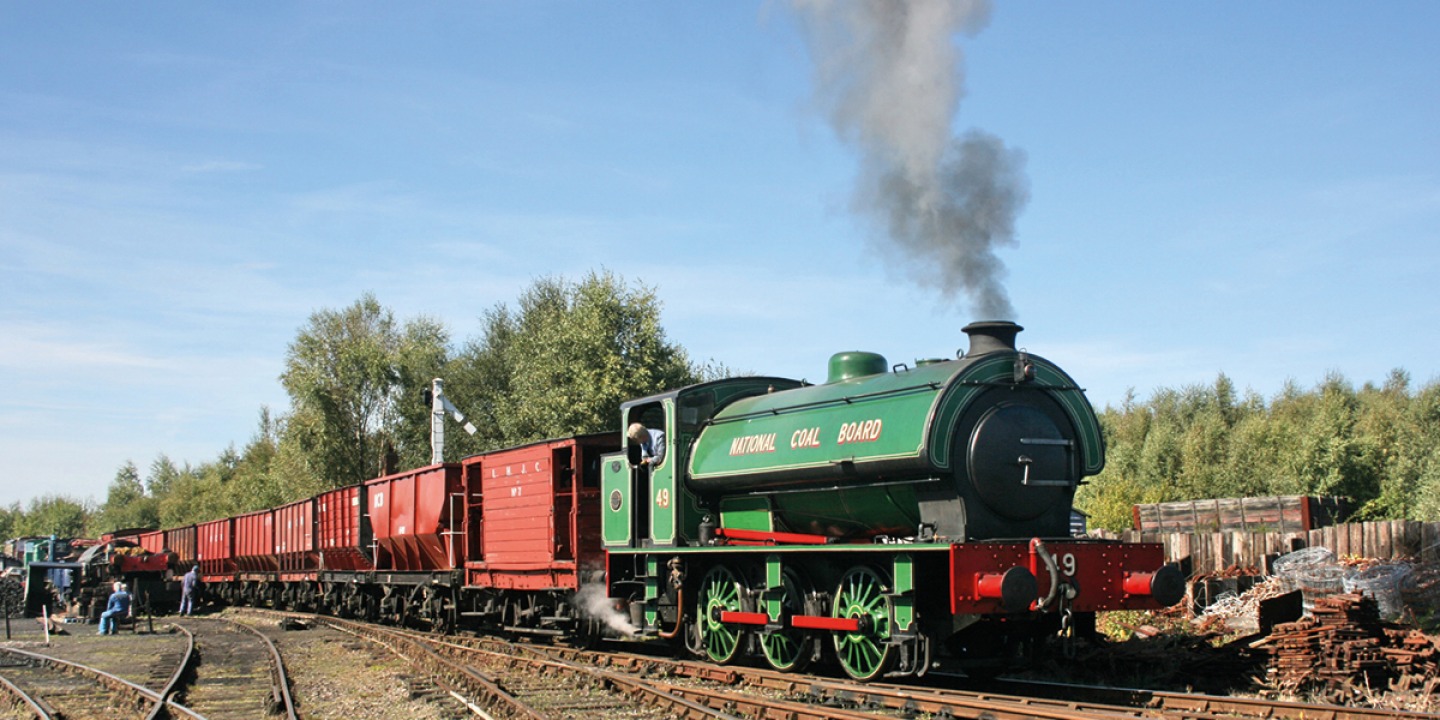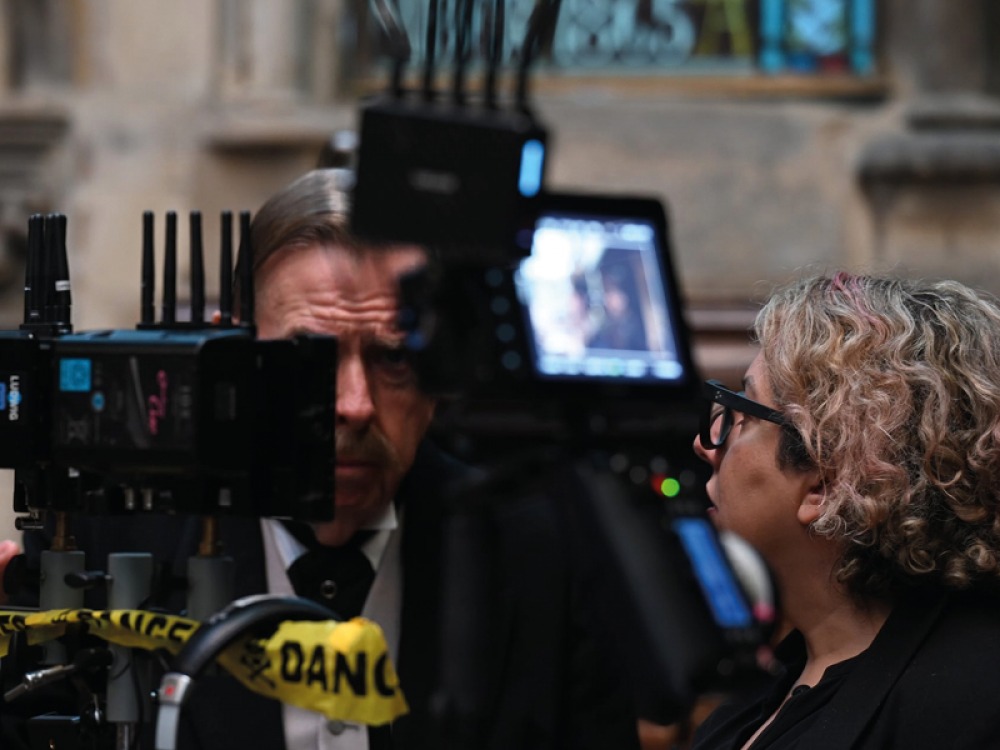Behind the Scenes of Virginia Woolf's Night & Day Filmed in the North East

A star-studded cast of actors including Lily Allen, Jennifer Saunders, Jack Whitehall and Timothy Spall have been shooting a film adaptation of Virginia Woolf's Night & Day

Virginia Woolf is considered one of the most important 20th century modernist authors and Night & Day is one of her early novels. Set in 1910, against a period of advances in science and technology, and a fight for women’s rights, it tells the story of Katharine Hilbery (played by Haley Bennett), an astronomer who does everything she can to avoid love, marriage and patriarchal attitudes.
Tina Gharavi, an Iranian-born British-American BAFTA and Sundance nominated director and filmmaker, who has lived on and off in Tyneside, is directing the new film adaptation. Tina is also a full-time lecturer in screenwriting and documentary at Newcastle University, and she started out in filmmaking as a teenager, working in the art department of a Hollywood film that was being shot near her high school. Although she originally studied painting at university, she’s always had a passion for filmmaking.
‘I used to stay up really late watching movies deep into the night,’ she recalls. ‘I think it’s one of the most democratic art forms because it transforms the way that we see ourselves and there’s nothing elitist about it. It’s the art form that most of us consume. I certainly did, and still do.’



Tina’s debut feature film I Am Nasrine, about teenage refugees coming to the North East, was shot in the region and nominated for a BAFTA. Night & Day is arguably her biggest project yet. ‘It’s been six years in the making (for me)… and many more years for the producers and writers,’ she says.
Originally, production was planned to take place in Dublin. ‘I went out and did a recce (where filmmakers go and make sure they have the locations and look for all the important elements),’ says Tina, ‘but I knew what we had in the North East was better. I was saying to the producers “we have one of these” and “we could film this there”. I think they literally got sick of me talking about it,’ she laughs, ‘and then they came to visit and they were really taken aback by what they saw. It was really like what it would’ve been like in London in 1910. There were all these advantages to moving production to the North East, so it really did mean doing a 180 on the plans they originally had, to relocate it to here.’
Having lived in the region for years, Tina already had plenty of ideas for filming locations. ‘As I was helping to write the script, and planning the film, I was using that index in my head, thinking parts could be filmed in Beamish, for example,’ she says. ‘The room I was always coming back to (and needed in the film) was The Lecture Theatre in The Common Room. It’s so striking. It’s circular, wooden, and exactly as a room like that would’ve been in 1910. Not much has changed. Some of the walls have been painted what I call a “ghastly” modern white now, but luckily we got to repaint those for the movie.’

Tina also discovered some hidden gems, including Ryhope Engines Museum in Sunderland. ‘It’s a remarkable venue and the people who run it as volunteers are really special,’ she explains. ‘They have really preserved the legacy of the Victorian era through to today. It’s a factory that you can walk into, and if you walked into it in 1910 it wouldn’t have been that much different. That’s really special. There’s these gigantic machines – the noise, the movement, the sense of it is just incredible. It’s really something unique. We did try to find those little corners to sew together – the alleyways or the back corner of a building we might already know.’
Filming also took place at the Lit & Phil in Newcastle and Tanfield Railway in Gateshead and Tina worked closely with Alison Gwynn, chief executive at North East Screen, to make all this happen. ‘So many people helped to support us,’ Tina says. ‘I already knew that the region as a whole is incredibly friendly and supportive and we worked really hard as a region to make it happen. There’s a lot of regional talent in the film, working on it or starring as supporting artists. It’s definitely a regional success story.’
The cast includes honorary Geordie Timothy Spall (who starred in Auf Wiedersehen Pet), his on-screen wife is Jennifer Saunders, and the line-up also includes actress Sally Phillips and comedian Jack Whitehall (who claims to have modelled his look on Newcastle United's Philippe Albert). ‘It was a bit surreal to be honest,’ Tina says, of working with the cast. ‘I don't think I’ve ever got over how amazing Jennifer Saunders is. I have still not recovered from the fact that I got to work with her. She’s so amazing. I think you’ll love her in this story because she plays a complex character. That was a bit a of a pinch-me moment!’
Lily Allen also joins the cast, playing a feisty Mary Datchet. ‘I think this is her first film role,’ Tina says. ‘She’s done theatre and she’s really looking to change the way she structures her work, and what she does. It’s great for women to branch out and reinvent and to not be boxed into things, which is a theme in the movie as well. It’s about not allowing there to be limitations to what women’s lives can be. It’s great that Lily’s doing that in the making of this film, and it’s very brave of her.’

Tina worked closely with writer Justine Waddell to tell a story that remains relevant, whilst also thinking about what Virginia may have wanted to say today. ‘She was a modernist so we have to be modernists as well,’ Tina explains. When asked what she believes Virginia might have thought, she says ‘maybe she would either say we’re taking her too seriously, or we’re not taking her seriously enough’. ‘I don’t know which, and it would probably depend on what mood she was in,’ Tina continues. ‘Having read her diaries, she could probably be a little bit chaotic in terms of her reaction to it. But it was written as a rom-com; it is a comedy with a romantic story. I think we’ve followed that, but a modernised version of it. Maybe she would say “you’re not being bold enough” because she was really incredibly bold in her decisions.
‘There’s still a very serious topic at the heart of it all, but I just hope people find hopefulness in it. It’s about love. It’s about a woman who’s ambitious so it’s very relatable to young women, and men as well. I hope [viewers] forget their troubles for a little bit, laugh a bit, and I also hope we shift the discussion on about women in science, women and ambition, and also how we see period drama. Often there’s been a narrow way of thinking about the past (a very minimalist, antiseptic, white, heteronormative way), but I think the Victorians (even by just reading Virginia’s diaries) were actually shocking and radical. The Bloomsbury Group were radical people – they were not uptight… we’re uptight! When you look at the suffragettes they were bombing stuff, throwing themselves under the king’s horse, locking themselves up in the Houses of Parliament. They were not shrinking violets, boring or stodgy: they were totally radical... something that has inspired me along the way.’







